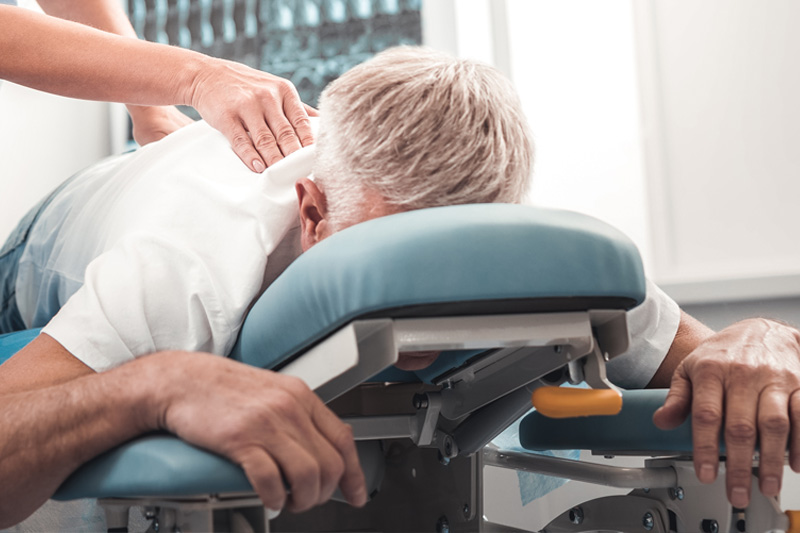Exploring the Benefits
Living with neurological conditions like Parkinson’s disease or multiple sclerosis can be really tough. The symptoms of these complex conditions can seriously affect your quality of life. But what if a drug-free, hands-on approach like chiropractic care could provide some relief?
Let’s explore how chiropractic focuses on the health of your nervous system through techniques like spinal adjustments. Exciting new research shows this may help reduce Parkinson’s symptoms and improve function. We’ll dive into that evidence and discuss how chiropractic could complement other treatments, as part of a holistic plan to manage neurological conditions and improve your day-to-day life.
Understanding Neurological Conditions
To understand how chiropractic care may help, let’s quickly cover what Parkinson’s disease and multiple sclerosis are all about.
These progressive neurological conditions damage the nervous system in different ways. Parkinson’s affects nerve cells that produce dopamine, while MS interrupts nerve signals between the brain and body.
Both result in a range of symptoms like fatigue, stiffness, tremors, and mobility issues that can really impact quality of life. Patients face physical challenges as well as emotional ones. Conventional treatments like medications and surgery may provide some relief but also come with side effects and limitations. That’s why many patients turn to complementary approaches like chiropractic care as well, to help manage symptoms in a holistic way.
The Role of Chiropractic Care
Chiropractors use hands-on spinal adjustments and other joint techniques to improve alignment, mobility, and nervous system function. By realigning the spine and reducing pressure on nerves, chiropractic aims to optimise communication between the brain and body. The gentle adjustments can help restore range of motion and reduce muscle tension and pain.
How Chiropractic Care Aids Neurological Health
Research shows those spinal adjustments and other chiropractic techniques can reduce inflammation, improve blood flow, and stimulate healing – which likely explains the positive impacts on neurological symptoms! Adjustments may calm an overactive nervous system and improve communication between the brain and body. Essentially, they help get your nerves and neurotransmitters firing on all cylinders again. Chiropractic also takes a whole-person approach – not just treating specific symptoms, but optimising overall wellness. This comprehensive care can help you manage challenges like fatigue, mobility issues, and pain. By complementing medications and lifestyle changes, chiropractic care empowers you to actively participate in your neurological health journey.
Promising Case Study Shows Chiropractic Benefits for Parkinson’s Patients
Exciting new research shows chiropractic care may help people with Parkinson’s disease manage their symptoms and improve function. A recent case study followed a 68-year-old woman with worsening Parkinson’s symptoms over 6 years [23]. She received chiropractic treatments including spinal adjustments, muscle therapy, and transcranial magnetic stimulation over 9 months [23,25]. The results were really promising! After chiropractic care, the patient reported significantly reduced pain and improved scores on a Parkinson’s quality of life questionnaire [23]. Measurements showed better posture, stability, and less hand deformity [23]. This aligns with other research finding spinal adjustments can improve mobility and neurological function in Parkinson’s patients [19,24]. While more research is still needed, this case study suggests chiropractic techniques like spinal adjustments may complement medications and help Parkinson’s patients by improving nervous system function, joint mobility, posture, and more [23]. So, chiropractic care could be a beneficial part of a holistic treatment plan.
Safety and Considerations
While chiropractic care shows promise for Parkinson’s symptoms, it’s understandable that safety concerns may arise. Any new treatment approach warrants caution. However, research indicates chiropractic adjustments are low risk when performed by licensed professionals. Still, patients should consult their doctor to rule out any contraindications. It’s also key to find a chiropractor experienced in working with Parkinson’s patients, as specialised skills may be required. Overall, chiropractic aims to gently restore alignment and mobility without putting strain on the body.
When it comes to complex neurological conditions, comprehensive treatment plans are ideal. Chiropractic care may complement traditional treatments or medications. Doctors and chiropractors can collaborate to monitor progress and adjust care as needed. Patients are encouraged to communicate openly about symptoms and any discomfort. With professional guidance, chiropractic adjustments may be a worthwhile addition to a personalised Parkinson’s regimen. However, patience and reasonable expectations are advised when exploring complementary approaches.
Managing Parkinson’s Symptoms with Chiropractic Care
For those living with Parkinson’s disease, consider discussing chiropractic care with Dr. Michael Black or Dr. David Black of Black Chiropractic. For over 38 years, they have provided personalised chiropractic treatment in the Manningham and Stonnington communities for a range of conditions including back and neck pain, headaches, sciatica, and injuries. As members of the Australian Chiropractors Association, their drug-free approach helps patients lead healthier lives.
Black Chiropractic offers substantial savings for BUPA clients, electronic private health fund claims, and Medicare EPC referrals. They have after-hours and weekend appointments available. To explore how their specialised chiropractic care may complement your Parkinson’s treatment, book an appointment online or contact Black Chiropractic today.
References
- [19] Wells MR, Giantinoto S, D’Agate D, Areman RD, et al. Standard osteopathic manipulative treatment acutely improves gait performance in patients with Parkinson’s disease. J Am Osteopath Assoc. 1999 Feb;99(2):92–8.
- [23] Chu EC, Wong AYL, Lee LYK. Chiropractic care for low back pain, gait and posture in a patient with Parkinson’s disease: a case report and brief review. AME Case Rep. 2021 Oct 25;5:34.
- [24] Chu EC, Wong AY. Mitigating Gait Decline in a Woman With Parkinson’s Disease: A Case Report. J Med Cases. 2022 Mar;13(3):140–144.
- [25] Mi TM, Garg S, Ba F, Liu AP, et al. Repetitive transcranial magnetic stimulation improves Parkinson’s freezing of gait via normalising brain connectivity. NPJ Parkinsons Dis. 2020 Jul 17;6:16.

